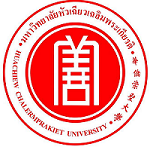Please use this identifier to cite or link to this item:
https://has.hcu.ac.th/jspui/handle/123456789/3519Full metadata record
| DC Field | Value | Language |
|---|---|---|
| dc.contributor.author | ณัฐกานต์ ทำทัน | - |
| dc.contributor.author | กนกวรรณ สลุงอยู่ | - |
| dc.contributor.author | เทอดพงศ์ ศรีสุขพันธุ์ | - |
| dc.contributor.author | ปิยาภรณ์ สุภัคดำรงกุล | - |
| dc.contributor.author | Nattakan Thamthan | - |
| dc.contributor.author | Kanokwan Salungyoo | - |
| dc.contributor.author | Thirdpong Srisukphun | - |
| dc.contributor.author | Piyaporn Supakdamrongkul | - |
| dc.contributor.other | Huachiew Chalermprakiet University. Faculty of Science and Technology. Student of Bachalor of Science and Technology | en |
| dc.contributor.other | Huachiew Chalermprakiet University. Faculty of Science and Technology. Student of Bachalor of Science and Technology | en |
| dc.contributor.other | Huachiew Chalermprakiet University. Faculty of Public and Environmental Health | en |
| dc.contributor.other | Huachiew Chalermprakiet University. Faculty of Science and Technology | en |
| dc.date.accessioned | 2025-01-15T05:41:15Z | - |
| dc.date.available | 2025-01-15T05:41:15Z | - |
| dc.date.issued | 2017 | - |
| dc.identifier.uri | https://has.hcu.ac.th/jspui/handle/123456789/3519 | - |
| dc.description | การประชุมวิชาการระดับชาติ วิทยาศาสตร์และเทคโนโลยีระหว่างสถาบัน ครั้งที่ 5 “วิทยาศาสตร์และเทคโนโลยีเพื่อขับเคลื่อนสู่ประเทศไทย 4.0” (ASTC2017: The 5th Academic Science and Technology Conference 2017 : Science and Technology as a New Driver towards Thailand 4.0) วันที่ 25 พฤษภาคม 2560 ณ โรงแรมมิราเคิลแกรนด์ คอนเวนชั่น กรุงเทพมหานคร : หน้า 312-317 | en |
| dc.description | สามารถเข้าถึงบทความฉบับเต็ม (Full Text) ได้ที่ : http://sci-database.hcu.ac.th/science/file/rsID169_F1_20170706144027.pdf | en |
| dc.description.abstract | การศึกษาครั้งนี้มีวัตถุประสงค์ที่จะคัดเลือกแบคทีเรียเชื้อผสมที่มีความสามารถผลิตเอนไซม์ไลเปสที่มีประสิทธิภาพสูงใน การย่อยสลายไขมันและน้ำมันในอาหารเพาะเชื้อ basal medium และน้ำเสียสังเคราะห์ โดยทำการศึกษาจากแบคทีเรียทั้งหมด จำนวน 17 ไอโซเลต ซึ่งจากงานวิจัยก่อนหน้านี้พบว่าแบคทีเรียไอโซเลตที่มีประสิทธิภาพในการย่อยสลายน้ำมันชนิดต่าง ๆ ได้ดี คือ ไอโซเลต GS-3 โดยน้ำมันที่ย่อยสลายได้ดีที่สุด คือน้ำมันปาล์ม น้ำมันรำข้าว และน้ำมันหมู ซึ่งสามารถย่อยสลายได้ 93, 92 และ 97 เปอร์เซ็นต์ ตามลำดับ จึงได้ทำการจับคู่ระหว่างไอโซเลต GS-3 ร่วมกับไอโซเลตอื่น ๆ อีก 16 ไอโซเลตใน อัตราส่วน 1:1 จากการทดสอบการย่อยสลายไขมันและน้ำมันโดยใช้กระบวนการหมักแบบไม่ต่อเนื่อง และมีการให้อากาศด้วยการ เขย่าที่อัตราเร็ว 200 รอบต่อนาที อุณหภูมิ 27-30 องศาเซลเซียส เป็นเวลา 36 ชั่วโมง พบว่าแบคทีเรียเชื้อผสมระหว่างไอโซเลต GS-3 และไอโซเลต HCUC 5-1 มีประสิทธิภาพในการย่อยน้ำมันถั่วเหลืองและน้ำมันหมูในอาหารเพาะเชื้อได้ดีที่สุด โดยสามารถย่อย สลายได้ 97.76±3.34 และ 96.21±3.32 เปอร์เซ็นต์ ตามลำดับ นอกจากนี้แบคทีเรียเชื้อผสมทั้ง 2 ไอโซเลต ดังกล่าวยังสามารถเจริญ ได้ดีในน้ำเสียสังเคราะห์สูตร 3 ซึ่งประกอบไปด้วยน้ำมันปาล์ม น้ำมันรำข้าว น้ำมันถั่วเหลือง และน้ำมันหมูอย่างละ 0.5 มิลลิลิตร (ความเข้มข้น 2 เปอร์เซ็นต์) โดยพบปริมาณเชื้อไอโซเลต GS-3 และไอโซเลต HCUC 5-1 ที่เวลา 126 ชั่วโมง (7 วัน) เท่ากับ 9.2 log CFU/ml และ 7.3 log CFU/ml ตามลำดับ และมีอัตราการย่อยสลายน้ำมันในน้ำเสียสังเคราะห์ เท่ากับ 73.08±2.07 เปอร์เซ็นต์ อัตราการย่อยสลายสารอินทรีย์ เท่ากับ 85.48±6.84 เปอร์เซ็นต์ และอัตราการเจริญของเชื้อ เท่ากับ 91.45±5.08 เปอร์เซ็นต์ จากผลทดลองเบื้องต้นนี้แสดงให้เห็นว่าแบคทีเรียเชื้อผสมที่คัดเลือกสามารถช่วยส่งเสริมและเพิ่มประสิทธิภาพการย่อย สลายไขมันและน้ำมันให้ดียิ่งขึ้น นอกจากนี้ยังมีประสิทธิภาพในการย่อยสลายมากกว่าการใช้ไอโซเลตเดี่ยว | en |
| dc.description.abstract | The objective of this study was to evaluate the lipase-producing mixed culture which high efficiency for degradation of fats and oils in basal medium and synthetic wastewater from seventeen bacterial strains. Previous research found that GS-3 isolate was effective for degradation of fats and oils especially with oil palm, rice bran oil and lards were 93, 92 and 97%, respectively. Thus, GS-3 isolate were matched with 16 other isolates in 1:1 ratio, by using a batch fermentation process and shaken at 200 rpm, 27-30ºC for 36 hours. The oil digestion was observed by mixed culture between GS-3 and HCUC 5-1 isolate, especially with soybean oils and lards were 97.76±3.34% and 96.21±3.32%, respectively. The strain GS-3 and HCUC 5-1 were grown in a synthetic wastewater medium type 3 which consists of palm oil, rice bran oil, soybean oil and lard oil 0.5 percent concentration each (2% mixed oil) with the number of cells at 126 hours (7 days) were 9.2 log CFU/ml and 7.3 log CFU/ml, respectively. Its rate of degradation of synthetic wastewater was 73.08±2.07%, rate of least reduction in chemical oxygen demand were 85.48±6.84%, and the amount of cell dry weight was 91.45±5.08%. According to these interesting results show that the mixed culture bacteria could be stimulate and enhance the degradation of fats and oils. It is also more effective in degrading than using single isolates. Keywords: degradation of oil, lipase, mix culture, synthetic wastewater. | en |
| dc.language.iso | th | en |
| dc.rights | คณะกรรมการจัดงานประชุมวิชาการระดับชาติ วิทยาศาสตร์และเทคโนโลยีระหว่างสถาบัน ครั้งที่ 5 | en |
| dc.subject | การย่อยสลายทางชีวภาพ | en |
| dc.subject | Biodegradation | en |
| dc.subject | ไลเปส | en |
| dc.subject | Lipase | en |
| dc.subject | น้ำมันและไขมัน | en |
| dc.subject | Oils and fats | en |
| dc.subject | น้ำเสีย -- การบำบัด -- วิธีทางชีวภาพ | en |
| dc.subject | Sewage -- Purification -- Biological treatment | en |
| dc.subject | น้ำเสีย -- การบำบัด – การกำจัดน้ำมัน | en |
| dc.subject | Sewage -- Purification -- Oil removal | en |
| dc.subject | แบคทีเรีย | en |
| dc.subject | Bacteria | en |
| dc.title | การศึกษาการใช้แบคทีเรียเชื้อผสมในการย่อยสลายน้ำมันและน้ำเสียปนเปื้อนน้ำมัน | en |
| dc.title.alternative | Study on Mixed Culture Bacteria for Degradation of Oil and Oil Contaminated Wastewater | en |
| dc.type | Proceeding Document | en |
| Appears in Collections: | Science and Technology - Proceeding Document | |
Files in This Item:
| File | Description | Size | Format | |
|---|---|---|---|---|
| Study-on-Mixed-Culture-Bacteria-for-Degradation-of-Oil-and-Oil-Contaminated-Wastewate.pdf | 101.89 kB | Adobe PDF | View/Open |
Items in DSpace are protected by copyright, with all rights reserved, unless otherwise indicated.
